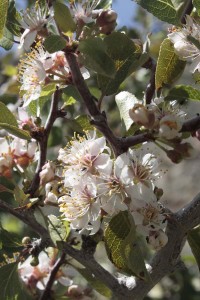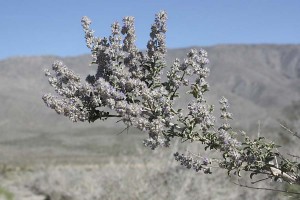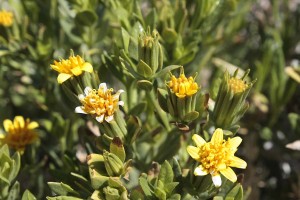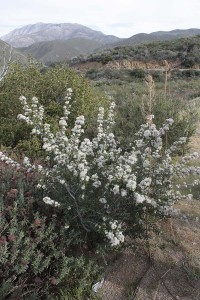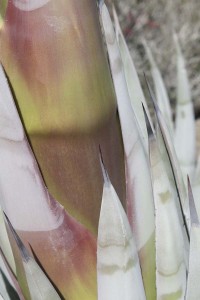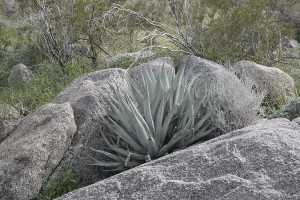Two weeks ago I joined the local CNPS chapter for a trip out to Anza Borrego Desert State Park with botanical wizard, Larry Hendrickson. Our destination was Plum Canyon, one of the rocky canyons that drains the eastern face of San Diego County’s Laguna Mountains. Spring wildflowers were close to their peak, and Larry knew ’em all, including a sighting of an Arizona plant that hadn’t yet been described in California.
This first plant is the species that gives the canyon its name. Well, you’d guess it’s some sort of plum, but the common name of Prunus fremontii is actually “desert apricot.” Plum, apricot…close enough.
I went a little crazy with the camera, and below are some of that craziness. (I think I got all the IDs correct on these, but if I missed a few, let me know!)
Desert sun is your first impression, but plants were everywhere, blooming and not.
Subtly colored, powerfully scented: Desert lavender, Hyptis emoryi. This common plant is in the mint family–It helps explain its intense aroma whenever you touch the plant.
Near the desert lavender, Trixis californica.
Subtle dark blue-violet flowers of Indigo bush Parry Dalea, Psorothamnus Marina parryi. (Thanks to jimrob and Larry Hendrickson for the correction here!)
A very cool spurge, Chamaesyce polycarpa.
One of the things you notice is that the plants often grow in the company of other plants, separated by expanses of sharp shards of decomposed mountainside. It’s not a look that people generally cultivate in their gardens but it makes sense here. Larger plants help provide shelter to seedlings. I’d also guess that more seeds end up caught up in the low branches of shrubs than they do in the bare earth with rain beating down on them. The effect is a bit of an enthusiastic jumble of plants.

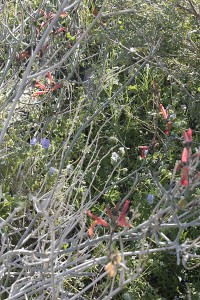


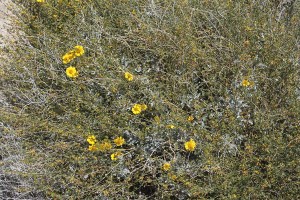
Speaking of garden-worthy plant combinations, I thought this composition of pale and silver-leaved plants and stems was a delicate mix of contrasting scale and textures.
Springtime in the desert means belly flowers galore…


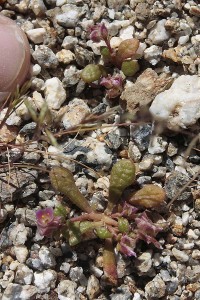
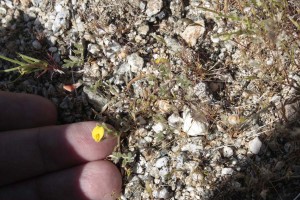
A mile up the canyon, as you gain a ltitle altitude, the California junipers start up.
Many were going crazy with the juniper berries.
And a couple junipers had this bug. I’m really bad with my insects, so I’m just calling this a juniper bug. I’m sure it’s got a real name… Edit (March 28): Thanks to Katie for this bug ID: This critter definitely looks like a western leaf-footed bug.
On the way home, climbing out of the desert, two differently-colored species of ceanothus provided spots of color along the sharp curves of Banner Grade. The lavender one was our fairly widespread C. tomentosus. But what was the white one? My carload of plant people just couldn’t stand not knowing. We had to stop and do a quick ID.
The slightly cupped leaves helped us identify this plant as Ceanothus greggi ssp. var. perplexans. Although known as “desert ceanothus” the plant didn’t get prolific until we started climbing near the 3,000 foot level.
This final photo is the plant in the landscape. How could we not stop for a closer look?

